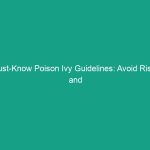Introduction
Good morning team,
Today, we are going to discuss a vital topic that is essential for our Safety and efficiency in the workplace: Essential Pneumatic Tools Guidelines: Avoid Common Safety Risks Today!. It’s important to understand the proper use and Safety Measures related to pneumatic tools, as they are widely used in our operations and can pose significant risks if not handled correctly.
By the end of this talk, you will have a clear understanding of how to safely operate these tools and why it matters to each of us. Let’s dive in!
Understanding Essential Pneumatic Tools
Pneumatic tools are power tools that utilize compressed air to function. They are commonly used in various industries, including construction, manufacturing, and automotive repair. Examples include air hammers, nail guns, and impact wrenches.
These tools are popular due to their efficiency and power-to-weight ratio. However, they can present numerous Hazards if not used correctly. Understanding the risks associated with pneumatic tools is crucial for maintaining a safe working Environment.
Many employees may believe that because pneumatic tools are common, they are inherently safe. This misconception can lead to complacency and increase the likelihood of accidents. Let’s break this down further.
Key Hazards, Risks, and Safety Considerations
When working with pneumatic tools, several hazards can arise, including:
- Air Leaks: Compressed air can escape from hoses or fittings, causing tools to malfunction.
- Noise Exposure: Many pneumatic tools operate at high decibel levels, leading to potential hearing damage.
- Flying Debris: Tools can propel objects at high speeds, posing a risk to nearby workers.
- Pressure Hazards: Improper use can result in excessive pressure buildup, leading to explosions or tool failures.
Ignoring these risks can lead to serious injuries, including lacerations, fractures, and even fatalities. It’s critical to recognize these dangers to foster a safer work environment.
Best Practices, Procedures, & Actionable Advice
To mitigate the risks associated with pneumatic tools, follow these Best Practices:
1. Proper Tool Selection
Always choose the right tool for the job. Using a tool that is not suited for the task can lead to accidents and injuries.
2. Regular Maintenance
Ensure that all pneumatic tools are regularly inspected and maintained. Look for signs of wear or damage, and replace any faulty components immediately.
3. Safety Equipment
Always wear appropriate Personal Protective Equipment (PPE), including:
- Safety Goggles to protect against flying debris
- Hearing protection to mitigate noise exposure
- Gloves that provide grip and protection
4. Safe Operating Procedures
Follow these procedures when operating pneumatic tools:
- Check the air pressure settings before use.
- Ensure that hoses are secured and free from kinks.
- Never point a tool at yourself or others.
- Disconnect tools from the air supply when not in use or during maintenance.
5. Training and Awareness
Participate in Training sessions to understand the proper use of pneumatic tools. Awareness of the tools’ functions and limitations is essential for safe Operation.
Real-World Incidents
Let’s consider a brief incident that highlights the importance of safety:
Last year, an employee was using a pneumatic nail gun without wearing Eye Protection. A nail ricocheted off a hard surface and struck another worker in the eye, resulting in a serious injury. This incident could have been avoided with proper Safety Measures in place.
Regulations, Standards, and Compliance
Compliance with safety Regulations is not just a legal obligation but a moral one. Familiarize yourself with the relevant Standards, including:
- OSHA Standards: The Occupational Safety and Health Administration sets guidelines for tool safety and Worker Protection.
- ANSI Standards: The American National Standards Institute provides specifications for pneumatic tool safety.
By adhering to these standards, we protect not only ourselves but also our coworkers. Remember that compliance helps prevent accidents and ensures a safer workplace for everyone.
Employee Engagement & Discussion
Now, I’d like to open the floor for discussion. Here are some questions to think about:
- What safety challenges have you encountered related to pneumatic tools?
- How do you ensure that you and your coworkers are following safety protocols?
- What improvements can we make to our current safety practices?
Your input is valuable, and sharing your experiences can help us all learn and improve our safety culture.
Conclusion & Key Takeaways
In conclusion, understanding and adhering to essential pneumatic tools guidelines is crucial for preventing accidents and ensuring a safe work environment. Remember to:
- Select the appropriate tools for your tasks.
- Perform regular maintenance and inspections.
- Wear the necessary Personal Protective Equipment.
- Follow established safety procedures at all times.
Prioritizing safety not only protects you but also your coworkers and the overall productivity of our operation. Thank you for your attention today and for your commitment to making our workplace a safer place.


